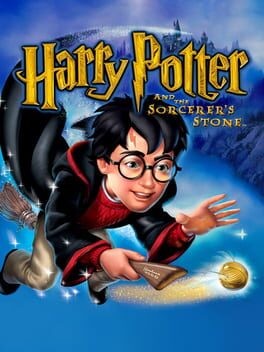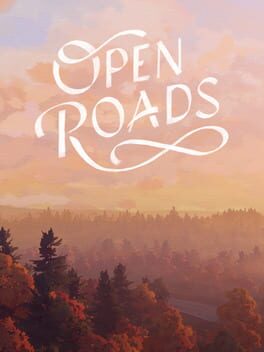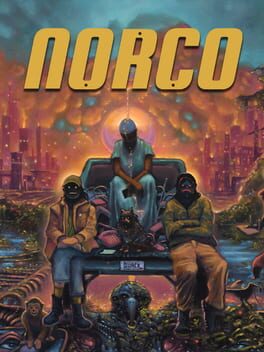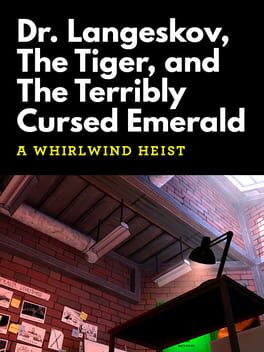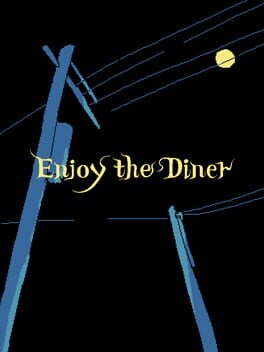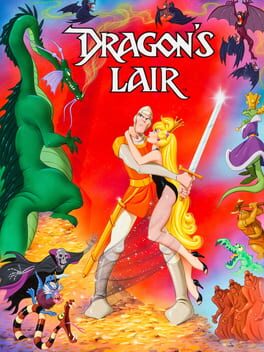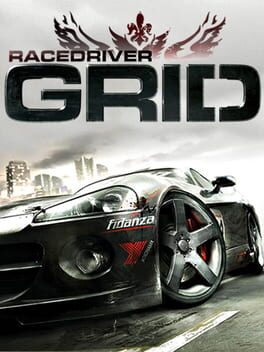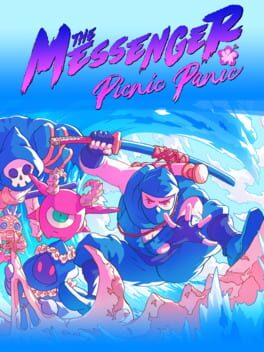UnikOffical
2024
A simple and enjoyable puzzle game about growing fantastic plants in the ambiance of a beautiful late 19th century estate. I really like that the game is quickly engaging and perfectly maintains the balance of difficulty, never becoming annoying and always remaining quite interesting in finding solutions to problems. The process of collecting information from various sources (which also tell a good story about the world and the heroine's life) and putting the pieces together into a single way of growing plants is very satisfying, and each plant and the way it is grown feels quite unique. The gradual exploration of the (it should be noted quite beautiful) location is also attractive, although the game does not go too deep into its disclosure. Only the expected social message can lead to a little sadness in this relaxing walk, but on the other hand, it’s good that it is there and that it deepens the story.
A good source of a fairly pleasant and relaxing couple of evenings that doesn't aim to be the next big thing in the genre, but it doesn't need to be. It's enough to be what it is - a good opening entry and just a good game. And after finishing it, I had a strong desire to see more stories about the quiet life in the 19th century, with a focus on the simple life of the people and about social or scientific development; perhaps this is actually a much more interesting direction than another game about space and science fiction.
A good source of a fairly pleasant and relaxing couple of evenings that doesn't aim to be the next big thing in the genre, but it doesn't need to be. It's enough to be what it is - a good opening entry and just a good game. And after finishing it, I had a strong desire to see more stories about the quiet life in the 19th century, with a focus on the simple life of the people and about social or scientific development; perhaps this is actually a much more interesting direction than another game about space and science fiction.
It's actually quite a nice little thing. This is my first Game Boy Color game, and my first JRPG in general (although the genre can only be applied to the game to some extent), and it was quite interesting to play through this version and compare it with the versions on home platforms.
First of all, I love how complete the world is in this version. Hogwarts here is noticeably larger and more intricate compared to the PC and PlayStation versions, where, although it was somewhat open, it was not as much as here. I like that the interior design has its own logic - here is a classroom on the floor, and next to it is the teacher’s office; there is room for a music class or an art class, a Muggle studies class (with even a TV), a bunch of secret passages between floors and various service rooms (and all this is quite useful to check, for example, the best spells can be found in the library, and they are actually very easy to miss). Although this was done partly for the sake of the genre features of the game (you still need places to grind for experience and money, although it is almost optional here), but this is structurally the most interesting Hogwarts of the three versions of adaptations of the first film (or book, which this version is actually closer to). Yes, at first it’s hard to navigate, but towards the end you remember all the stairs and it even becomes quite cozy (which is also helped by good music and visuals, the game looks great).
In addition to the locations, this is also the most complete version of the first year in terms of plot. Which is of course not surprising, mechanically this is the simplest version and it was quite easy to stage all the episodes of the story here. However, this is still enjoyable, I especially like the segment with lessons - each of them represents a small side quest, and almost each has its own interesting small mechanics (and you choose the order in which to complete them). Other episodes are also not bad, although again, due to the genre, the number of similar battles can be tiring (especially at the beginning, when you are also defeated quite often). The only sad thing is that there is no Quidditch at all, which is strange, because there are episodes with flying and somehow they could have thought about adding Quidditch, but apparently the developers didn’t want to or didn’t have time.
Gameplay-wise, this seems to be a simplified version of a JRPG - experience is not deducted for defeats, and by the middle of the game it becomes quite easy, except perhaps for the bosses at the end, in battles with which you need to think (and without skippable spells from the library, it will be very difficult to defeat them). Also here you can buy or find stronger equipment, prepare potions (which you almost never use, but it’s good that there is such an opportunity) and collect a bunch of wizard cards (and even use different combinations in battle, which I almost didn’t do since at the end of the game I still didn’t have any cards for interesting combinations; it seems that for this purpose you can exchange cards with other players through the gameboy connection function).
It’s hard for me to compare this version with others, because it is even more distant in genre, but it's a fun game in its own right. It’s hard to recommend if you can’t stand the monotony of the genre (and I myself played most of the time while listening to a podcast in the background, to be honest), it has a number of strange decisions (like sometimes strange character sprites in dialogues), but overall it’s a good attempt to retell the book in a simple game form, and if you, like me, take the crazy path of going through all the game adaptations of the story about the boy who lived, this sweet, simple version is quite worthy (and probably more worthy of many that will come next) of your attention.
First of all, I love how complete the world is in this version. Hogwarts here is noticeably larger and more intricate compared to the PC and PlayStation versions, where, although it was somewhat open, it was not as much as here. I like that the interior design has its own logic - here is a classroom on the floor, and next to it is the teacher’s office; there is room for a music class or an art class, a Muggle studies class (with even a TV), a bunch of secret passages between floors and various service rooms (and all this is quite useful to check, for example, the best spells can be found in the library, and they are actually very easy to miss). Although this was done partly for the sake of the genre features of the game (you still need places to grind for experience and money, although it is almost optional here), but this is structurally the most interesting Hogwarts of the three versions of adaptations of the first film (or book, which this version is actually closer to). Yes, at first it’s hard to navigate, but towards the end you remember all the stairs and it even becomes quite cozy (which is also helped by good music and visuals, the game looks great).
In addition to the locations, this is also the most complete version of the first year in terms of plot. Which is of course not surprising, mechanically this is the simplest version and it was quite easy to stage all the episodes of the story here. However, this is still enjoyable, I especially like the segment with lessons - each of them represents a small side quest, and almost each has its own interesting small mechanics (and you choose the order in which to complete them). Other episodes are also not bad, although again, due to the genre, the number of similar battles can be tiring (especially at the beginning, when you are also defeated quite often). The only sad thing is that there is no Quidditch at all, which is strange, because there are episodes with flying and somehow they could have thought about adding Quidditch, but apparently the developers didn’t want to or didn’t have time.
Gameplay-wise, this seems to be a simplified version of a JRPG - experience is not deducted for defeats, and by the middle of the game it becomes quite easy, except perhaps for the bosses at the end, in battles with which you need to think (and without skippable spells from the library, it will be very difficult to defeat them). Also here you can buy or find stronger equipment, prepare potions (which you almost never use, but it’s good that there is such an opportunity) and collect a bunch of wizard cards (and even use different combinations in battle, which I almost didn’t do since at the end of the game I still didn’t have any cards for interesting combinations; it seems that for this purpose you can exchange cards with other players through the gameboy connection function).
It’s hard for me to compare this version with others, because it is even more distant in genre, but it's a fun game in its own right. It’s hard to recommend if you can’t stand the monotony of the genre (and I myself played most of the time while listening to a podcast in the background, to be honest), it has a number of strange decisions (like sometimes strange character sprites in dialogues), but overall it’s a good attempt to retell the book in a simple game form, and if you, like me, take the crazy path of going through all the game adaptations of the story about the boy who lived, this sweet, simple version is quite worthy (and probably more worthy of many that will come next) of your attention.
2024
Eh... it’s quite sad and hard to be slightly disappointed in the new work of a team whose work you’ve been following for a long time. Open Roads from the team of the same name (from the former core of Fullbright studio) can hardly be called the next step for the creators of Gone Home and Tacoma, rather a child of its difficult development cycle. And it's really sad.
Well, the story is not bad. It brings you back to Gone Home in the way the game turns a slightly mystical premise into a down-to-earth, everyday ending, which is generally done quite well, but also quite simply. The game perhaps feels too short, and the choice of road trip structure, while fresh, seems to come at the expense of the excellent environmental storytelling skills that the team's previous projects have been known for. There simply aren't large enough locations to develop this skill beyond a very basic level of interaction, and the game as a whole struck me as disappointingly less interactive and detailed than previous works (only in the summer house segment does the story get an acceptably large location and path within it and layout plot-significant objects has at least a little more interesting thought behind the most basic level). However, the two main performances are not bad, the variety of dialogue between the heroines is pleasing (and there even seems to be some choice), and although the story itself does not feel too deep, the good chemistry between the characters lifts this aspect a little.
And at the same time, the hardest thing for me is to formulate my thoughts about a rather important and interesting decision in the visual aspect of the game. Despite (as before for the team) a rather realistic environment, this time the characters are drawn in a 2D style that seems to correspond to comics or animation of the era (and besides this, even in the environment there is a certain touch of “drawnness” that departs from realism (which, however, is not a bad thing at all and allows you to create beautiful background landscapes, especially in the segment with a summer house it is incredibly beautiful)). And if at first it looked rather repulsive and incongruous, then towards the end I came to terms with this stylistic decision a little. I just don't understand why they didn't use the characters themselves somewhere other than dialogue (where they look most unnatural), since in the scene in the car the mother looks pretty good while driving. Well, the characters themselves are drawn quite simply and without any attempt to synchronize speech with their faces, here they simply give out one of a small number of emotions and then seeing a static character while the dialogue is going on is quite sad. What's also sad is the technical part of the game. There is nothing critical here, but a few small moments that obviously could be seen in the very basic playtest (mainly with the mechanics of picking up items) slightly spoil the overall impression (considering that this is a very mechanically simple game and it is very difficult to break anything here). However, it's hard to criticize the game too much for this given its notoriously difficult production history.
So overall, I’m just a little sad that this project is more of a victim of circumstances and in no way a development for this team. I hope that these people will be able to create something more exciting in the future, perhaps separately and in new teams. Because it seems that Open Roads is a thing that needed to be finished and left behind, just as the heroines of this game actually do in their story.
Well, the story is not bad. It brings you back to Gone Home in the way the game turns a slightly mystical premise into a down-to-earth, everyday ending, which is generally done quite well, but also quite simply. The game perhaps feels too short, and the choice of road trip structure, while fresh, seems to come at the expense of the excellent environmental storytelling skills that the team's previous projects have been known for. There simply aren't large enough locations to develop this skill beyond a very basic level of interaction, and the game as a whole struck me as disappointingly less interactive and detailed than previous works (only in the summer house segment does the story get an acceptably large location and path within it and layout plot-significant objects has at least a little more interesting thought behind the most basic level). However, the two main performances are not bad, the variety of dialogue between the heroines is pleasing (and there even seems to be some choice), and although the story itself does not feel too deep, the good chemistry between the characters lifts this aspect a little.
And at the same time, the hardest thing for me is to formulate my thoughts about a rather important and interesting decision in the visual aspect of the game. Despite (as before for the team) a rather realistic environment, this time the characters are drawn in a 2D style that seems to correspond to comics or animation of the era (and besides this, even in the environment there is a certain touch of “drawnness” that departs from realism (which, however, is not a bad thing at all and allows you to create beautiful background landscapes, especially in the segment with a summer house it is incredibly beautiful)). And if at first it looked rather repulsive and incongruous, then towards the end I came to terms with this stylistic decision a little. I just don't understand why they didn't use the characters themselves somewhere other than dialogue (where they look most unnatural), since in the scene in the car the mother looks pretty good while driving. Well, the characters themselves are drawn quite simply and without any attempt to synchronize speech with their faces, here they simply give out one of a small number of emotions and then seeing a static character while the dialogue is going on is quite sad. What's also sad is the technical part of the game. There is nothing critical here, but a few small moments that obviously could be seen in the very basic playtest (mainly with the mechanics of picking up items) slightly spoil the overall impression (considering that this is a very mechanically simple game and it is very difficult to break anything here). However, it's hard to criticize the game too much for this given its notoriously difficult production history.
So overall, I’m just a little sad that this project is more of a victim of circumstances and in no way a development for this team. I hope that these people will be able to create something more exciting in the future, perhaps separately and in new teams. Because it seems that Open Roads is a thing that needed to be finished and left behind, just as the heroines of this game actually do in their story.
1993
How cheerful and fun it still feels! I'm really surprised how id Software in 1994 not only literally created the genre, but also immediately gave it just a reference lesson in level design, which is the first chapter. In the second and third they start to experiment and the results vary, but it is still very high quality, very easy to understand at first and quite difficult towards the end. Small details like the swinging of weapons when walking, the face of the main character at the bottom of the screen, secrets in levels that often trick you at the same time, or interesting design solutions so easily raise the cult status of this game years later. Did Carmack, Romero and company know that they were creating such a cult project then? I don’t know if there is an exact answer to this question, but I think that they definitely knew that dynamically destroying demons with a lot of blood and a cheerful soundtrack would be a fun experience. And in this they were absolutely right.
2022
It turned out to be quite an unusual and charming thing. An intriguing mixture of point-and-click quest and visual novel (and even with a combat system) in a dark mixture of not-too-distant cyberpunk and southern Louisiana mysticism that is Norco - a very involving, confusing and at times frightening experience. I was thinking about whether it was possible to effectively transform the old genre of text quests and the execution of the formula in this project is exactly what is needed to return this niche form of video games to modern realities. Beautiful pixel art and painstaking descriptions (and also a wonderful interface) create a truly intriguing world, the web of which is extremely interesting to unravel. The game successfully mixes creepy moments with quite funny humor (though it certainly could have been better in places), and thanks to your involvement in the world, you want to know even more about it even as the credits roll. It’s nice that the game surprises in moments and gives special segments in terms of gameplay (for example, an episode with a theater, which also turns out to be a preparation; or an episode in the town hall), and besides this, almost all the solutions to the “puzzles” are both intuitive (and the game helps well) and not too obvious. The story itself, in addition to excellent world-building and competent work with a parallel narrative structure, succeeds most of all, it seems to me, in deceiving the player’s expectations - several times during the game something completely unexpected happened and radically changed the picture of what was happening. But in the story, as for me, lies the main drawback of the game.
And specifically, unfortunately, its ending. Around somewhere from the appearance of the shopping center, it seems to me that the game loses a little focus of the narrative and where it then goes, although it looks partly logical, it still begins to raise questions. And the ending itself seems to me rather crumpled, written too abstractly at the climactic moments, and even with a choice of several endings, none of them seems satisfactory and does not really answer many questions (although the overall picture can be put together). This is partly just a subjective rejection, since I perhaps expected a different balance of power in this story, but abstracting from this, the entire final part of the game can hardly be called not (at least a little) disappointing. Which of course is a little sad, and only increases the desire to learn more about the world of the game.
However, other than that it's pretty good! Norco does an excellent job of showing the vitality of the genre in modern times while creating a unique mix with a compelling world and (with caveats) a quality story. Sometimes poetic, sometimes creepy, sometimes funny, sometimes surprising, sometimes sad. And it’s absolutely a pity that the Monkey wasn’t with me the whole game.
Monkey stares at you. You stare at Monkey
And specifically, unfortunately, its ending. Around somewhere from the appearance of the shopping center, it seems to me that the game loses a little focus of the narrative and where it then goes, although it looks partly logical, it still begins to raise questions. And the ending itself seems to me rather crumpled, written too abstractly at the climactic moments, and even with a choice of several endings, none of them seems satisfactory and does not really answer many questions (although the overall picture can be put together). This is partly just a subjective rejection, since I perhaps expected a different balance of power in this story, but abstracting from this, the entire final part of the game can hardly be called not (at least a little) disappointing. Which of course is a little sad, and only increases the desire to learn more about the world of the game.
However, other than that it's pretty good! Norco does an excellent job of showing the vitality of the genre in modern times while creating a unique mix with a compelling world and (with caveats) a quality story. Sometimes poetic, sometimes creepy, sometimes funny, sometimes surprising, sometimes sad. And it’s absolutely a pity that the Monkey wasn’t with me the whole game.
Monkey stares at you. You stare at Monkey
Halfway through I wanted to write something like "It's just The Stanley Parable Demonstration, but with an unfunny narrator" as a review, but the final gag is pretty funny though.
So, okay William and Crows Crows Crows, but also why.
(And also the achievements are still broken, huh. Minus an hour of life, thanks)
So, okay William and Crows Crows Crows, but also why.
(And also the achievements are still broken, huh. Minus an hour of life, thanks)
2015
A charming thing that draws you in only to break you in the end. Form, structure, multi-level meta-commentary and in the end just an extremely emotional story that beautifully changes itself and changes you afterwards.
I'm thinking about the meaning of the game's title right now. Davey said that it took him a long time to find it, and it seems that he finally managed to accurately express this story in the title. This is the Beginner's Guide to video game development. This is the Beginner's Guide to videogames in general. This is the Beginner's Guide to human emotions, thoughts and states. And I think, although it sounds a little general, this is the Beginner's Guide to people.
And in the end, after so much time since the release, I hope Davey has sorted out all the issues. I hope he found freedom from this frighteningly vast labyrinth.
I'm thinking about the meaning of the game's title right now. Davey said that it took him a long time to find it, and it seems that he finally managed to accurately express this story in the title. This is the Beginner's Guide to video game development. This is the Beginner's Guide to videogames in general. This is the Beginner's Guide to human emotions, thoughts and states. And I think, although it sounds a little general, this is the Beginner's Guide to people.
And in the end, after so much time since the release, I hope Davey has sorted out all the issues. I hope he found freedom from this frighteningly vast labyrinth.
This game, like the other portable spin-off of the first game, is undoubtedly very limited by its status and platform capabilities. It also has terrible mechanics of movement, monotonous quests (not only secondary, but also main ones in the end) and a partly secondary story. It is also in a minimally acceptable release state, as if it was thrown out almost immediately after work on the vital elements was completed. And at times in the cutscenes it was hard to understand whether everything that was happening was really so funny and ridiculous or whether it was a great joke and everything was really intended to be that way.
Don't get me wrong - this is still a mediocre, even bad product. But this game is at least completely playable (almost) without much pointless effort or tantrums. And this already makes Bloodlines a big step forward compared to the disgusting DS version. And this is at least something.
Don't get me wrong - this is still a mediocre, even bad product. But this game is at least completely playable (almost) without much pointless effort or tantrums. And this already makes Bloodlines a big step forward compared to the disgusting DS version. And this is at least something.
2023
Quite a good project to end my gaming year. Enjoy the Diner is a small visual novel with quest elements that immediately attracts attention with its intriguing premise and pleasantly simple style (as well as a certain minimalist-retro approach in general). The development of the story and the development of the characters are very good, and in general the variety of dialogues with the characters is pleasing. The only sad thing is that the game seems to end after revealing the whole essence of what is happening, leaving the feeling that although the project is quite well filled with thoughts, the creators could have taken paths that were much more ambitious, emotional and even frightening (the whole game I was waiting for the events to take a more sinister tone, but (fortunately?) this did not happen). But we can hardly blame the developers for this; instead, we should hope that they themselves will take on a more grandiose idea in the future.
And this one is just a little melancholic, but still warm little thing for a couple of evenings outside of space and time. And there's even a soda fountain (and a great soundtrack).
And finally, the inscriptions at the bottom of the screen with a map of the cafe are simply wonderful
And this one is just a little melancholic, but still warm little thing for a couple of evenings outside of space and time. And there's even a soda fountain (and a great soundtrack).
And finally, the inscriptions at the bottom of the screen with a map of the cafe are simply wonderful
2021
Oh wow, this is such a strange thing, in both good and bad ways. And it’s so hard for me to structure this bunch of thoughts, so don’t expect fluidity here.
Firstly, the game shines in its visual design. It is extremely unique and enjoyable. Many moments can simply be hung in a frame. The game gradually develops it perfectly and the variety of scene direction pleases. Genesis Noir also boldly (and this is one of the key words to characterize the entire project) tries to mix noir and space, and in some places it turns out quite well. The game connects these seemingly distant genres in an interesting way, and this (as it becomes clear after the ending) at first glance strange decision works well for the final main idea. The story itself turns out to be quite ambitious and mixes classic noir romance with showing the history of the entire universe, from the Big Bang itself to the inevitable end.
However, the way the game reveals the story leads us to the main oddity of this project - the gameplay. Most of the game consists of episodes in which the main character obtains some important item and at the same time observes one of the stages of the development of the universe, and often directly takes part in them. Genesis Noir is largely abstract, and while this approach goes well with the visuals, the gameplay here is often just... boring? Perhaps, and at the same time often unobvious, primitive and sometimes even unnecessary. Often (especially in the first half of the game) it was not entirely clear what to do, where to move or how exactly to interact. The game tries, but overall doesn't do very well in the visual direction in the gameplay-oriented segments. In other moments, the game mixes elements of a quest(?) and a narrative platformer, which it does much better (though still at simple level). And initially it even seemed to me that this project should have been just an animated film (which changed by the end of the game). Another extremely strange thing for me is the almost complete absence of music. For a project that could go both in the jazz direction and in the direction of cosmic ambient music, this is almost criminally unacceptable. Up to a certain point, this can be partly explained by the narrative, but even after that the situation does not change. Even in episodes focused on music, it seems to be missing. Only very occasionally does jazz burst in for half a moment and it instantly becomes something dynamic and alive. I don’t understand at all the almost complete disregard for this aspect, because in my opinion, if the creators had made music one of the main elements of the game, each episode of the story would have become more special and memorable.
However, the plot saves a lot. At first it looks strange, too abstract, as if trying to cover too much at once and connect something too distant. And this is partly true. But once you understand a little about the structure of the game and enter its second half (or better yet, the last third), the picture of what the creators are talking about becomes a little more clear. Part of the plot is still a mystery to me (for example, I still find it difficult to firmly connect the noir part with the entire cosmic narrative), but this extremely ambitious and bold approach in a very non-obvious and slightly drawn-out way leads the player to (in my opinion) a wonderful final idea. The way this story managed to unite myths, faith, creativity and science into a single narrative about the entire history of the universe and our purpose in the world, about the eternal attempts to understand it, to find the most distant answers - is simply magnificent. This is really what makes the game worth playing for. And surprisingly, this game sparked my interest in science more than anything else in my life (which is quite strange). At the end of the game, the gameplay also perfectly complements the narrative, creating an epilogue that actually saves the game. It's quite strange that the game gives you two endings to choose from (and both are quite detached and poetically sad), but oh well okay.
Genesis Noir has aspects that are far from ideal (besides, I would like to see a slightly more polished technical state) and I understand the low ratings, but in the end, subjectively, the last half hour before the very end and especially the last text monologue are worthy of some of your not-so-best hours with a video game before. Still, Feral Cat Den are going in an interesting and original direction, and while they are stumbling over every third stone, I like the groundwork and I hope that they will reach the point. In the meantime - a fine myth, gentlemen!
"We give it a name. We call it The Constant"
Firstly, the game shines in its visual design. It is extremely unique and enjoyable. Many moments can simply be hung in a frame. The game gradually develops it perfectly and the variety of scene direction pleases. Genesis Noir also boldly (and this is one of the key words to characterize the entire project) tries to mix noir and space, and in some places it turns out quite well. The game connects these seemingly distant genres in an interesting way, and this (as it becomes clear after the ending) at first glance strange decision works well for the final main idea. The story itself turns out to be quite ambitious and mixes classic noir romance with showing the history of the entire universe, from the Big Bang itself to the inevitable end.
However, the way the game reveals the story leads us to the main oddity of this project - the gameplay. Most of the game consists of episodes in which the main character obtains some important item and at the same time observes one of the stages of the development of the universe, and often directly takes part in them. Genesis Noir is largely abstract, and while this approach goes well with the visuals, the gameplay here is often just... boring? Perhaps, and at the same time often unobvious, primitive and sometimes even unnecessary. Often (especially in the first half of the game) it was not entirely clear what to do, where to move or how exactly to interact. The game tries, but overall doesn't do very well in the visual direction in the gameplay-oriented segments. In other moments, the game mixes elements of a quest(?) and a narrative platformer, which it does much better (though still at simple level). And initially it even seemed to me that this project should have been just an animated film (which changed by the end of the game). Another extremely strange thing for me is the almost complete absence of music. For a project that could go both in the jazz direction and in the direction of cosmic ambient music, this is almost criminally unacceptable. Up to a certain point, this can be partly explained by the narrative, but even after that the situation does not change. Even in episodes focused on music, it seems to be missing. Only very occasionally does jazz burst in for half a moment and it instantly becomes something dynamic and alive. I don’t understand at all the almost complete disregard for this aspect, because in my opinion, if the creators had made music one of the main elements of the game, each episode of the story would have become more special and memorable.
However, the plot saves a lot. At first it looks strange, too abstract, as if trying to cover too much at once and connect something too distant. And this is partly true. But once you understand a little about the structure of the game and enter its second half (or better yet, the last third), the picture of what the creators are talking about becomes a little more clear. Part of the plot is still a mystery to me (for example, I still find it difficult to firmly connect the noir part with the entire cosmic narrative), but this extremely ambitious and bold approach in a very non-obvious and slightly drawn-out way leads the player to (in my opinion) a wonderful final idea. The way this story managed to unite myths, faith, creativity and science into a single narrative about the entire history of the universe and our purpose in the world, about the eternal attempts to understand it, to find the most distant answers - is simply magnificent. This is really what makes the game worth playing for. And surprisingly, this game sparked my interest in science more than anything else in my life (which is quite strange). At the end of the game, the gameplay also perfectly complements the narrative, creating an epilogue that actually saves the game. It's quite strange that the game gives you two endings to choose from (and both are quite detached and poetically sad), but oh well okay.
Genesis Noir has aspects that are far from ideal (besides, I would like to see a slightly more polished technical state) and I understand the low ratings, but in the end, subjectively, the last half hour before the very end and especially the last text monologue are worthy of some of your not-so-best hours with a video game before. Still, Feral Cat Den are going in an interesting and original direction, and while they are stumbling over every third stone, I like the groundwork and I hope that they will reach the point. In the meantime - a fine myth, gentlemen!
"We give it a name. We call it The Constant"
1983
Okay, two obvious observations - the animation of this game is great and the gameplay of this game... meh. It's a great idea and a truly technical achievement for '83, but playing it now will undoubtedly leave you feeling frustrated for the rest of the day. I tried to run the arcade version on the computer, but realized that it was not at all easy and switched to the Dragon's Lair Trilogy bundle (which, for lack of other options, is generally okay), which, like a gift from heaven, included the display of the buttons required to press on a separate panel. Without this, my experience would undoubtedly have been much more frustrating, as segments of the game strangely range from fairly well visually guiding (and fortunately this is most of the game) to moments that are too fast, not obvious and literally distract you on purpose a couple of times (which is quite funny though). I understand that this is a game for an arcade machine, and it cannot be built differently, but this does not make it much more enjoyable. The structure of the game itself is quite interesting, and could be developed further by adding (for example) items or significant forks (which may be in the sequel). However, the visuals, outstanding for its time, undoubtedly save this game, and it is still very pleasant to look at (although most of the time I was still looking at the button panel).
And with that being said, who was actually enjoying this game in '83 - the player suffering (and getting poorer) trying to save the princess, or the mere observers standing at the arcade and just watching the amazing animation without having to press any buttons?
And with that being said, who was actually enjoying this game in '83 - the player suffering (and getting poorer) trying to save the princess, or the mere observers standing at the arcade and just watching the amazing animation without having to press any buttons?
A masterclass in narrative, game design, structure, and creativity in video games, What Remains of Edith Finch is also an incredibly striking, rich, and consistently sad story. The attention to detail, the coherence and originality of each story, and their dark tone all contribute to one of the best experiences I've had with a video game. An extremely depressing experience, but still so wonderful. A true work of art of the modern world.
Giant Sparrow's next project is something the video game industry needs more than almost anything else right now. And I am undoubtedly standing in the front row of this (hopefully large) waiting crowd.
Giant Sparrow's next project is something the video game industry needs more than almost anything else right now. And I am undoubtedly standing in the front row of this (hopefully large) waiting crowd.
2022
oh boy there's so much stuff mixed in here.
I'm not at all a fan of survival horror (and I usually avoid horror games in general), but this was pretty impressive. The game has a beautiful style that successfully integrates many cultural influences, and what's even better is that Signalis is completely unconstrained when it comes to presentation. The saturation of surprising decisions and a bunch of small details do not allow you to tear yourself away from the walkthrough (and I completed the entire game in literally two nights), and the execution of the transitions from chapter 2 to 3 is simply wow. The story perfectly develops into a depressing tale of love, suffering, cruelty, time and death. Well, the presence of several endings, including a secret one, is also pleasing. Of course, this is one of those games after which you go read an extended analysis, because the presentation of the plot is rather non-linear. But here it is not annoying, but rather fits well with the overall presentation of the project. I would also like to note that the puzzles are very good, which came as a surprise.
And the game, of course, has a number of (subjective) shortcomings - roughness in the gameplay, imperfect distribution of resources at levels, a rather small inventory that leads to useless running errands; appearing directly at opponents and instantly taking damage (and a couple of times for some reason I received damage from corpses), and also the most annoying thing - sometimes the sight jumps from one enemy to another at the slightest movement, after which your aim is lost and you do not have time to run away. In addition, I personally am not entirely fine with the anime style in the cutscenes; they could have been more complete and detailed.
However, overall it was a great experience. I'm far from a major horror fan, but this game grabbed me and didn't really let me go until the very end. Many of the solutions are quite unique and work well to create a rich, mysterious and frightening world. I've read several opinions that it's just a mixture of all the interesting and influential projects with similar themes (like Resident Evil, Silent Hill, Neon Genesis Evangelion, Lovecraft, etc.). And this is probably partly true, but I also cannot deny that this cocktail of the best ingredients brought me a lot of emotions and thoughts. And that's the most important thing in the end.
I'm not at all a fan of survival horror (and I usually avoid horror games in general), but this was pretty impressive. The game has a beautiful style that successfully integrates many cultural influences, and what's even better is that Signalis is completely unconstrained when it comes to presentation. The saturation of surprising decisions and a bunch of small details do not allow you to tear yourself away from the walkthrough (and I completed the entire game in literally two nights), and the execution of the transitions from chapter 2 to 3 is simply wow. The story perfectly develops into a depressing tale of love, suffering, cruelty, time and death. Well, the presence of several endings, including a secret one, is also pleasing. Of course, this is one of those games after which you go read an extended analysis, because the presentation of the plot is rather non-linear. But here it is not annoying, but rather fits well with the overall presentation of the project. I would also like to note that the puzzles are very good, which came as a surprise.
And the game, of course, has a number of (subjective) shortcomings - roughness in the gameplay, imperfect distribution of resources at levels, a rather small inventory that leads to useless running errands; appearing directly at opponents and instantly taking damage (and a couple of times for some reason I received damage from corpses), and also the most annoying thing - sometimes the sight jumps from one enemy to another at the slightest movement, after which your aim is lost and you do not have time to run away. In addition, I personally am not entirely fine with the anime style in the cutscenes; they could have been more complete and detailed.
However, overall it was a great experience. I'm far from a major horror fan, but this game grabbed me and didn't really let me go until the very end. Many of the solutions are quite unique and work well to create a rich, mysterious and frightening world. I've read several opinions that it's just a mixture of all the interesting and influential projects with similar themes (like Resident Evil, Silent Hill, Neon Genesis Evangelion, Lovecraft, etc.). And this is probably partly true, but I also cannot deny that this cocktail of the best ingredients brought me a lot of emotions and thoughts. And that's the most important thing in the end.
2008
Excellent variety of tracks, modes and cars in the first half, but by the end of the game it turns into the most annoying thing in the world due to the overuse of annoying tracks, extremely strange car physics (where opponents always don’t care about collisions and your car always flies off like cardboard) and incomprehensible jumps in difficulty (like Le Mans, where you are literally always behind a couple of rivals in speed and the track doesn’t really provide opportunities for overtaking). Well, or is it all just a skill issue of a layman in the racing genre. But at least in general, the concept of a career, variability in setting up your team and competitions are really not bad.

